With every new year comes emerging design trends. Along with these, there are a few timeless trends that we see resurface and persist as the years progress. Advancing technology and increasing public access to creative programs have caused designers to embrace realism in their work. On the other end, this advancement in technology has allowed artists to gain further appreciation for analog art and consider motifs of the past. At iFrog, each member of our Design team draws from their unique creative backgrounds and applies their knowledge to the ever-changing design world. Daily, our talented creative team keeps up to date with current design trends, while applying their own unconventional ideas. Embracing the future, while cherishing the past seems to be the all-encompassing theme when it comes to 2023 design trends.
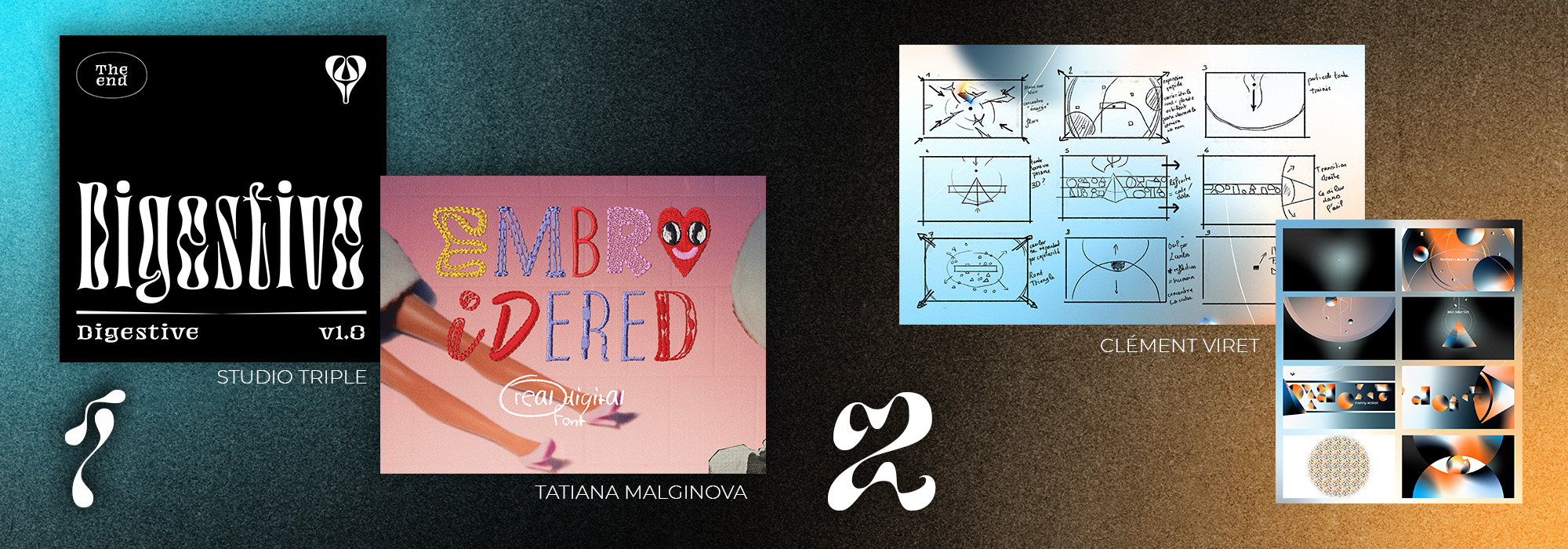
1. Experimental Type/Type as Image
Designers and artists are progressively thinking about how they can bend the “conventional” rules of typography, the art and discipline of arranging text for both form and function. Two design trends that demonstrate this are experimental typefaces and using typography as image. Blurring the line between type’s informative purpose and type serving as imagery has become popular amongst creative thinkers. “Type as image” refers to the use of typography to not only provide context but, instead, using a typeface’s visual nuances to create a narrative and more appeal. Experimental typefaces are often used to do this due to their unique characteristics and unconventional looks. Examples of experimental typefaces include, but are not limited to, “Digestive” by Studio Triple, or “Embroidered” by Tatiana Malginova on Behance. The mediums in which these typefaces and letterforms are created are limitless, as you can easily see when doing a simple Google search for “experimental type.”
With this being said, there are a variety of experimental typefaces out there that you can apply to your own design and marketing. These fun, unconventional fonts will make your consumers stop and take a second look at your campaigns. While there are times during which you cannot blur the line between type as information and image for clarity’s sake, this technique can apply to campaign logos, large-scale graphics, and product packaging.
2. Kinetic Image and Motion Graphics
Everybody loves seeing eye-catching, dynamic animation. There is an increasing interest in movies that feature beautifully rendered worlds and close-to-life characters. From this, the question arises, “How can we incorporate this in design work?” Motion graphics and kinetic typography bring this exciting, animated feel into design. These techniques put an edge on the run-of-the-mill, static imagery we encounter daily. Adding movement to your design, whether that entails a simple animation or more involved story-building, can elevate your message drastically. With the rise of TikTok and other short-form video platforms, consumers are desensitized to static imagery. Short-form animations and videos have captured the attention of audiences across the globe and have proven to help promote branding. Kinetic imagery and motion graphics are also not limited to online marketing. Your company can elevate its advertising strategy by considering large-scale, digital signage within a physical space.
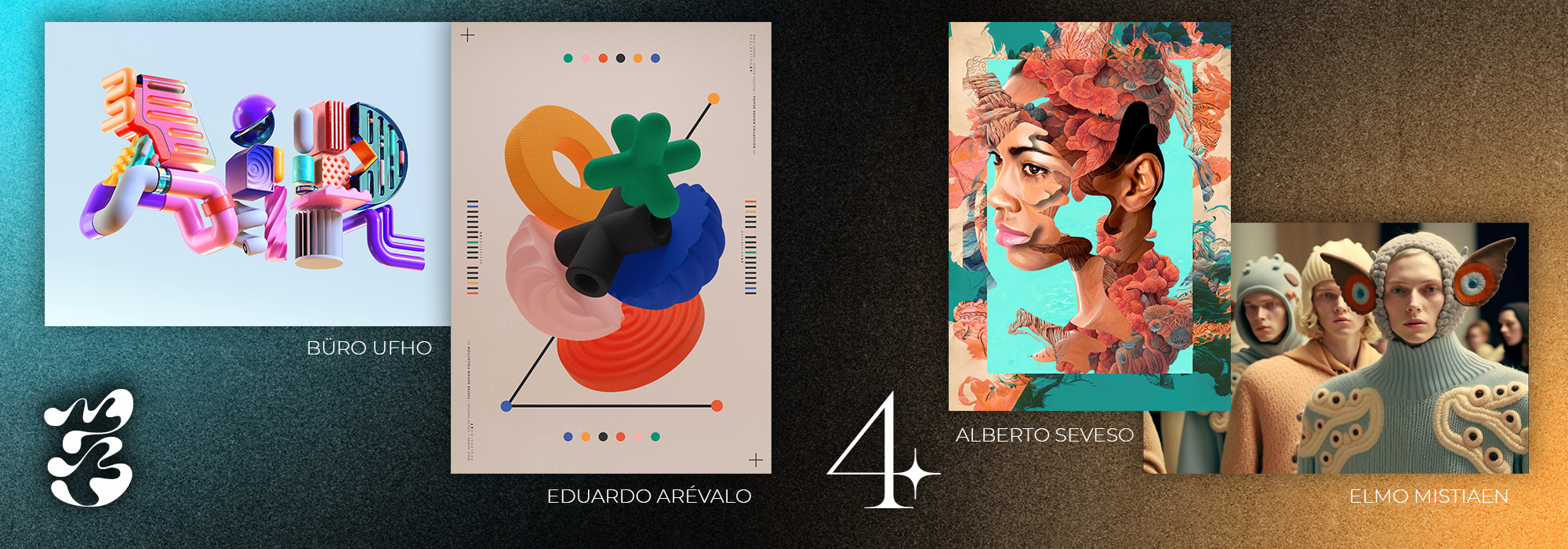
3. 3D Design
Utilizing 3-dimensional design elements is another way to introduce world-building into your campaigns and marketing strategy. “World-building” does not necessarily mean creating an intricate environment, like concept artists. World-building can be as simple as breaking the 2-dimensional plane of a design and introducing a place for objects or type to exist. 2D screens will always exist, but 3D design can at least create the illusion of space and time within your work. The introduction of space and dimension will make your work much more dynamic. Your design elements will establish a perceived feel, weight, and mass, giving the illusion that they take up space. In addition to this, many 3D designers experiment with texture and lighting, which further adds to the dimension and realism. All of these aspects of 3D design appeal to the senses, which are essential to consider in any marketing effort. Appealing to the human senses subconsciously makes consumers feel more engaged in their viewing, thus giving your work more traffic.
4. AI Generation
The rise of artificial intelligence has caused quite a controversy in the realm of digital art. Artists wonder if their livelihoods will be threatened by the ability to easily generate complex, visual concepts by typing a few words into a field and clicking a button. Many also argue that AI samples and steals from other artists’ work found on online platforms. Regardless of your stance on AI-generated art, the programs can be helpful when needing to quickly produce an idea or when looking for inspiration. If you are fresh out of ideas and have consistently used the same design techniques for certain clients, AI can suggest an alternative approach to your project. Some individuals use AI-generated content without adding their own flare, but more often than not, there are flaws in the content. For marketing purposes, it is best to draw inspiration from AI sources and also add a humanized touch to your art. Regardless of its controversy, AI can be useful for businesses and artists.
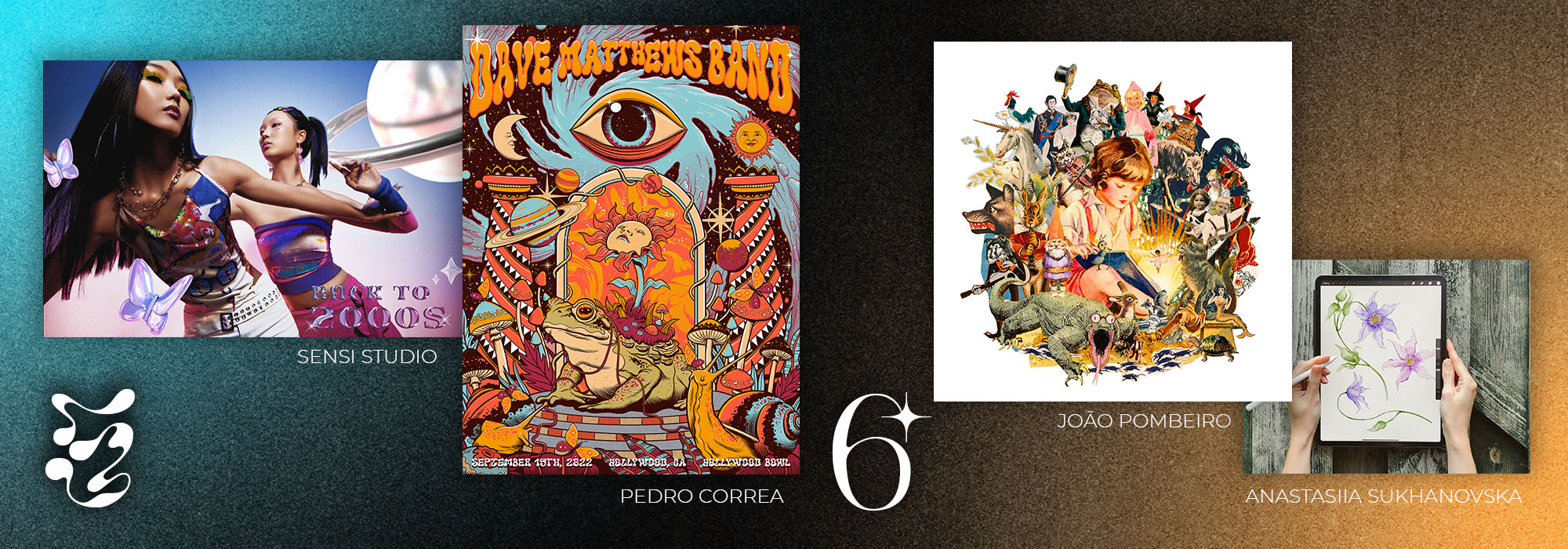
5. Nostalgic and Retro Elements (Blast From the Past)
Undoubtedly, people love seeing allusions and references to their childhood and the past. Including nostalgic references and retro elements in designs is a trend that can be considered timeless. Regardless of the year or time period, the content that is represented is dependent on what the designer considers “vintage” or “retro.” This is a perspective that changes as generations progress. Nostalgic design is a personalized trend that targets niche audiences but is very effective in capturing attention. As of recent, the most popular decades designers have pulled from are the 70s, 80s, and early 2000s. This is largely due to the age range of emerging designers and marketers, who are Millennials and Gen Z. In a marketing mindset, it is hard to stray away from the new and upcoming products, but it is just as important to highlight the products that were there from the very beginning. Not only do nostalgic references bring a sense of comfort and joy, but they can remind the consumer why they have been loyal to your brand in the first place.
6. Analog Art Reimagined
The emergence of digital art with the rise of the Information Age has caused more and more businesses to stray away from analog forms of creation. With this, the imagery was flattened on screens, the texture was stripped away, and the tangible feel of art became underappreciated. A recent wave of designers trying to bring back the tangible aspect of art has begun to blur the line between analog and digital design. There is now a multitude of digital brushes, textures, and other assets that are available to mimic the realistic look of “hand-made” artworks. With these, you can have the timeless look of analog art, paired with the efficiency of technology. Many trending print methods and mediums designers try to mimic include, risograph print, collage, oil painting, and photocopying. Mimicking analog processes ties into the nostalgic feel consumers may have and separates your design from others in a digital age.
Start Trending
It may be difficult to use all these trends when designing for your clients and consumers, but even using a handful will keep your branding current, thought-provoking, and push its boundaries. These design trends can apply to your work, no matter the niche market or consumer base. There is always room for experimentation in design styles and concepts. Having a high quantity of heavily branded and often compliance-laden automotive partners at iFrog does not stop our creative team from asking how we can push boundaries, while also promoting success. At iFrog, we strive to create timeless design assets with a trendy flare. At the same time, we push to captivate our clients and their consumers. We constantly stay informed on current design trends and simultaneously, keep up with what has intrigued our client’s consumers from day one.
Are you ready to elevate your brand and stay in touch with current design trends? Enlist the creative experts at iFrog! Contact us or email our team for a consultation at sales@ifrog.com.
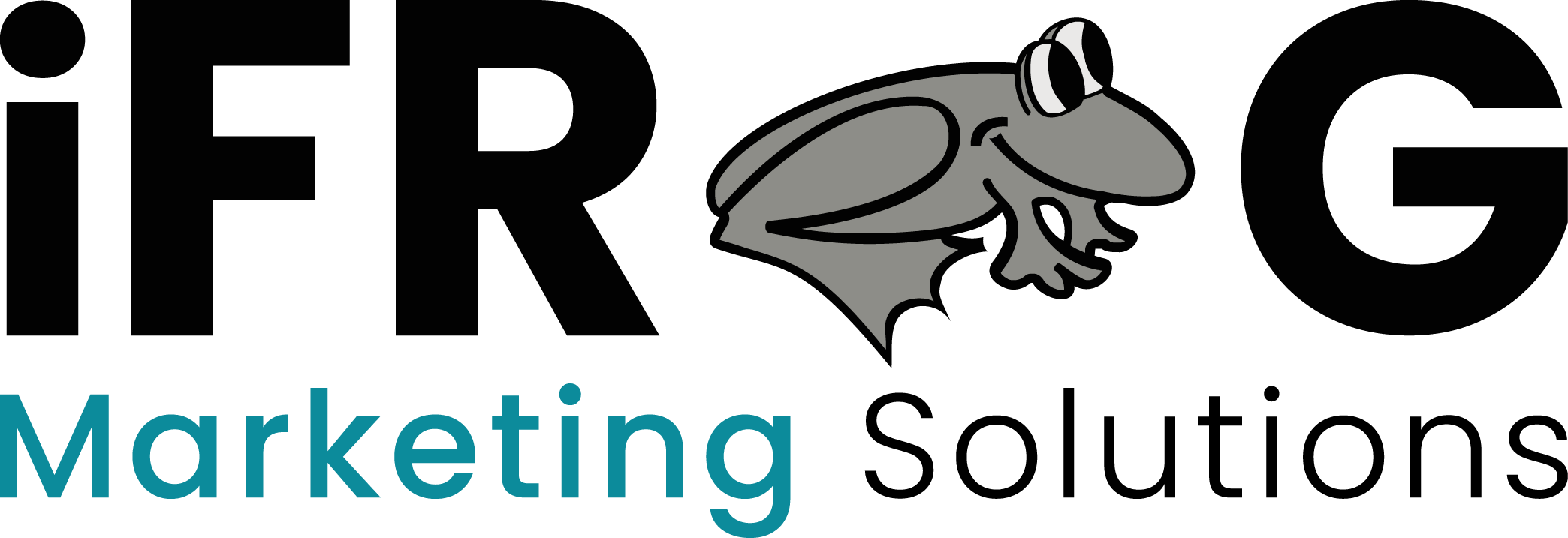
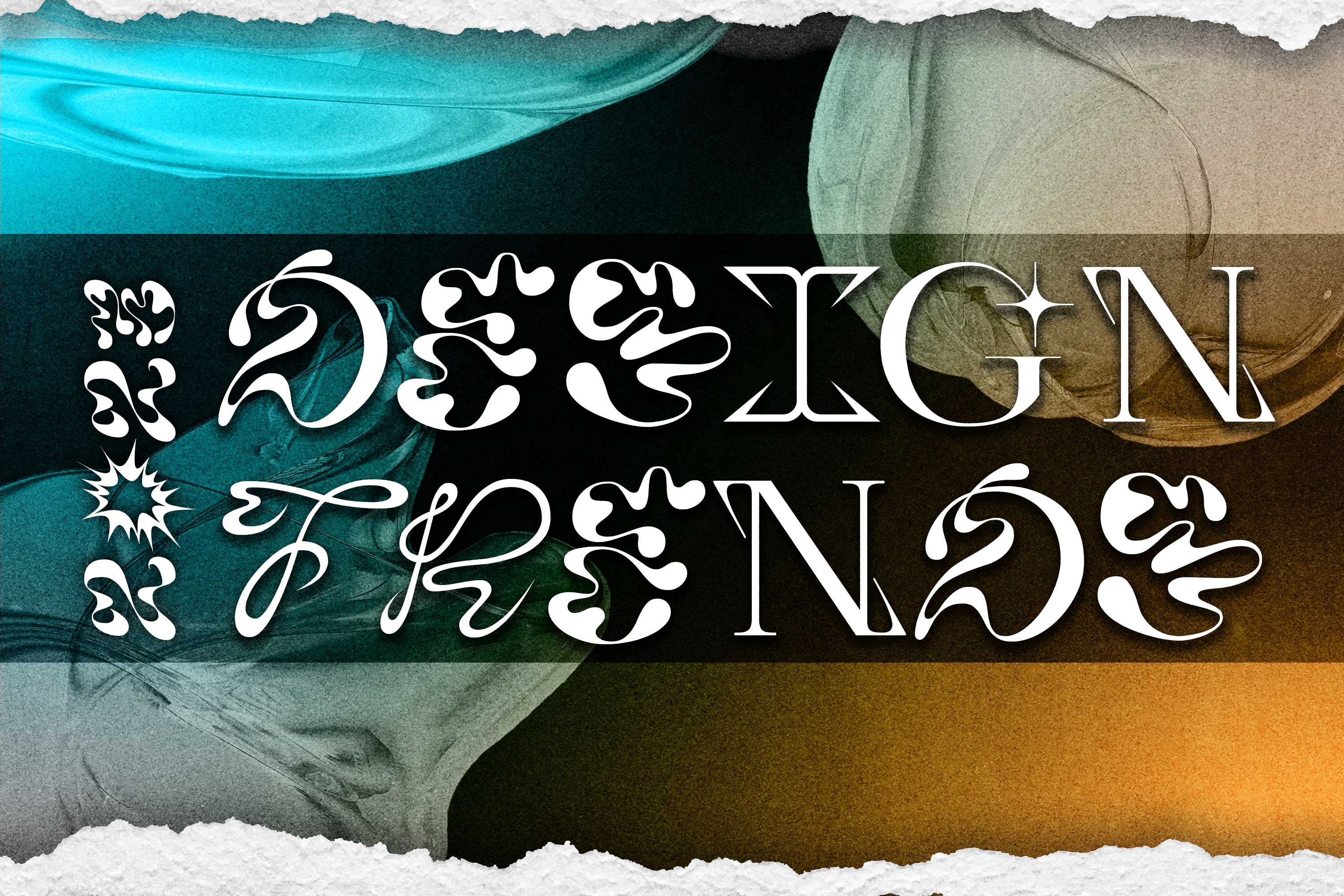
Comment